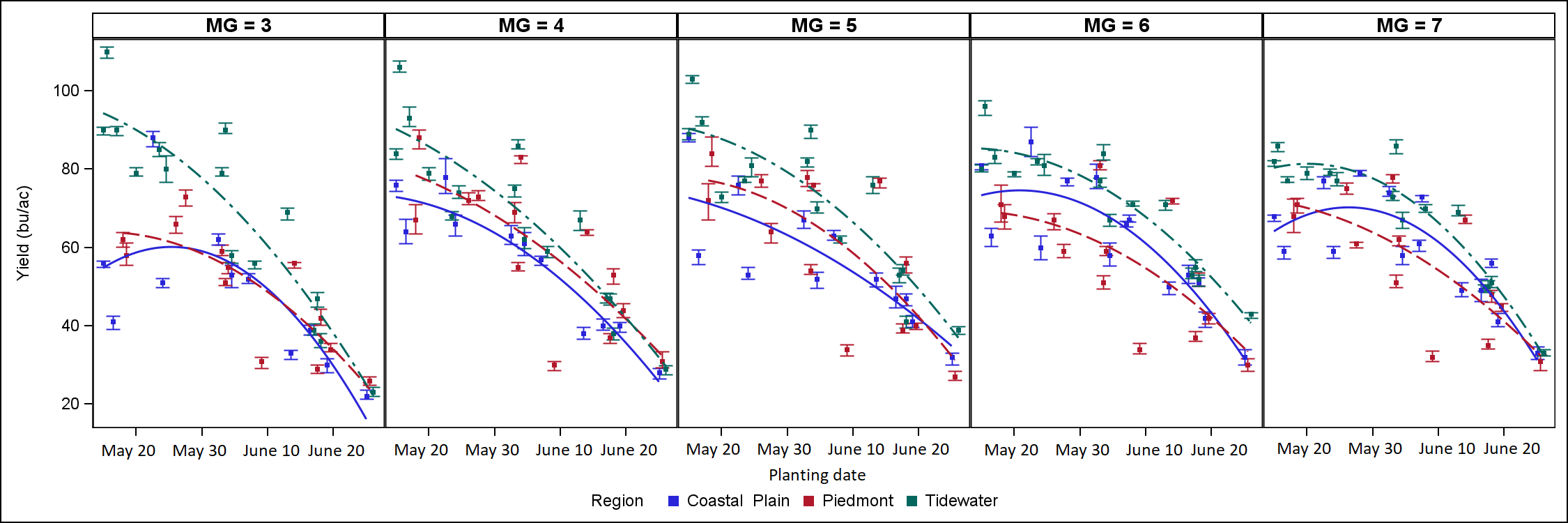Plant Full-Season Soybeans by Mid-May to Prevent Yield Loss
go.ncsu.edu/readext?935482
en Español / em Português
El inglés es el idioma de control de esta página. En la medida en que haya algún conflicto entre la traducción al inglés y la traducción, el inglés prevalece.
Al hacer clic en el enlace de traducción se activa un servicio de traducción gratuito para convertir la página al español. Al igual que con cualquier traducción por Internet, la conversión no es sensible al contexto y puede que no traduzca el texto en su significado original. NC State Extension no garantiza la exactitud del texto traducido. Por favor, tenga en cuenta que algunas aplicaciones y/o servicios pueden no funcionar como se espera cuando se traducen.
Português
Inglês é o idioma de controle desta página. Na medida que haja algum conflito entre o texto original em Inglês e a tradução, o Inglês prevalece.
Ao clicar no link de tradução, um serviço gratuito de tradução será ativado para converter a página para o Português. Como em qualquer tradução pela internet, a conversão não é sensivel ao contexto e pode não ocorrer a tradução para o significado orginal. O serviço de Extensão da Carolina do Norte (NC State Extension) não garante a exatidão do texto traduzido. Por favor, observe que algumas funções ou serviços podem não funcionar como esperado após a tradução.
English
English is the controlling language of this page. To the extent there is any conflict between the English text and the translation, English controls.
Clicking on the translation link activates a free translation service to convert the page to Spanish. As with any Internet translation, the conversion is not context-sensitive and may not translate the text to its original meaning. NC State Extension does not guarantee the accuracy of the translated text. Please note that some applications and/or services may not function as expected when translated.
Collapse ▲Using the right soybean planting date is one of the most important management decisions in soybean production.
We have been generating data since 2019 to help growers make decisions about soybean planting date across production situations (regions, maturity groups, seeding rates, yield environments) in North Carolina. We have conducted this research in diverse production environments (n=15) over the past four years.
We have consistently seen that delaying planting date past mid-May decreases soybean yield in our state (Figure 1). Yield loss per day as planting date is delayed is not constant as time progresses but generally we are losing anywhere from 0.45 to 0.87 bu/A/d by delaying planting past May 20.
Delayed planting impact on soybean yield across NC regions: In general across maturity groups, the yield loss from delayed planting is greater in the Tidewater region than the Coastal Plain or the Piedmont region by about 0.1 bu/A/d.
Delayed planting impact on soybean yield across maturity groups: In general across regions, the yield loss from delayed planting is greater for earlier maturing varieties (MG 3 and 4) than later maturing varieties (MG 5-7) by 0.1-0.2 bu/A/d.
The last USDA -NASS report estimated that only 15% of North Carolina soybeans were planted by May 7, 2023. Based on our wheat acreage estimates (510,000 acres) and our soybean acreage estimates (1,750,000 acres), our double crop soybean acres will be no more than 30% of our total soybean acres (USDA-NASS). So we have a lot of full season soybeans to plant over the next week!



